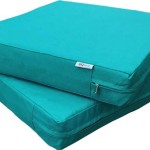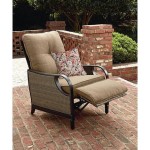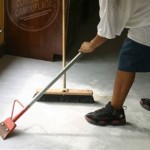What Oil To Use On Outdoor Wood Furniture
When it comes to protecting and beautifying your outdoor wood furniture, choosing the right oil is essential. With a wide range of oils available, it can be overwhelming to decide which one is best for your needs. To help you make an informed decision, here's a guide to the essential aspects of selecting the right oil for your outdoor wood furniture.
Oil Types
There are two main categories of oils used for outdoor wood furniture: natural oils and penetrating oils. Natural oils, such as linseed oil and tung oil, penetrate the wood and create a protective barrier on the surface. They are environmentally friendly and offer a natural finish. Penetrating oils, such as teak oil and marine oil, are designed to deeply penetrate the wood and provide maximum protection from moisture and UV damage.
Finish and Protection
The type of finish you desire will influence your oil choice. Natural oils typically provide a matte or satin finish, while penetrating oils can give a glossy or semi-gloss finish. Natural oils offer moderate protection against moisture and UV damage, but penetrating oils provide superior protection and durability.
Wood Type
The type of wood you have will also affect your oil selection. Hardwoods, such as teak and mahogany, are naturally more resistant to rot and decay and can tolerate a wider range of oils. Softwoods, such as pine and cedar, require more frequent oiling and benefit from penetrating oils that provide deeper protection.
Climate and Location
The climate and location of your furniture will influence the type of oil you need. If your furniture is exposed to harsh weather conditions, such as extreme heat, cold, or moisture, you will need an oil that provides maximum protection. In dry climates, a natural oil may be sufficient.
Application and Maintenance
The application and maintenance of the oil will also impact your decision. Natural oils require more frequent reapplication, while penetrating oils can last for several months or even years. Consider the amount of time and effort you are willing to put into maintaining your furniture.
Additional Considerations
In addition to the factors mentioned above, there are a few other considerations to keep in mind when choosing an oil for your outdoor wood furniture:
- Toxicity: Some oils, such as linseed oil, can be toxic if ingested. Choose non-toxic oils if your furniture is used around pets or children.
- Odor: Natural oils have a strong odor that can linger for several days. Penetrating oils typically have a more neutral odor.
- Cost: The cost of oils varies depending on the type and brand. Consider your budget and the frequency of application when making your decision.
Conclusion
Choosing the right oil for your outdoor wood furniture is crucial for protecting and beautifying your investment. By considering the factors discussed in this guide, you can make an informed decision that will ensure your furniture remains in top condition for years to come.

Wood Oils A No Nonsense Guide Rawlins Paints Blog

Traditional Wood Oils 3 Of The Best Finishes Direct

What Are The Best Oils For Wood Furniture

Wood Oils A No Nonsense Guide Rawlins Paints Blog

How To Re Your Wood Furniture With Teak Oil Ramsle Glam

What S The Best Oil To Treat Wooden Garden Furniture

What Are The Best Oils For Wood Furniture

How To Oil Outdoor Furniture Finding Silver Pennies

When And How Often To Treat Outdoor Wood Finishes Direct

How To Apply Teak Oil Your Garden Furniture
Related Posts








